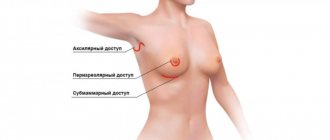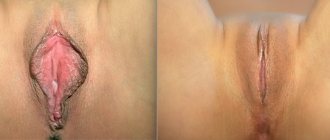The breasts of most women after the birth of a child, excessive lactation, feeding, against the background of age-related changes or sudden weight fluctuations, unfortunately, lose their attractive volume, elasticity and sexuality. Under the influence of these processes, the skin stretches, the mammary glands sag, acquire an elongated, flat shape - such ugly breasts cause a woman not only aesthetic inconvenience, but also psychological discomfort. But it is obvious that tight and high breasts give a woman youth and extraordinary attractiveness, she drives men crazy and attracts their gaze. It is for this purpose that the arsenal of modern plastic mammology and, of course, the long-term successful practice of Tigran Albertovich Aleksanyan has all the operations necessary for women that can make the breasts firm, raised and proportional. And breast lift (mastopexy) is considered the most effective in solving these problems. However, very often this operation is combined with the simultaneous installation of implants (endoprostheses).
Corrective mastopexy technique
Breast lift has a number of techniques, but in each of them the surgeon makes a circular incision around the areola and a vertical incision from the areola to the horizontal inframammary fold (sometimes just an areolar incision is enough). In order to move the nipple to a more elevated position and create a new voluminous breast shape, the surgeon redistributes the glandular tissue, removes part of the stretched skin and achieves the desired “raised breast” effect. Very often, mastopexy creates a visual effect of increasing the size of the mammary glands due to tissue redistribution. The breasts not only become lifted and more voluminous, due to the excision of excess tissue, elasticity and density appear in them. After the operation, the patient is left with barely noticeable areolar and vertical scars. This operation is usually performed under general anesthesia and lasts on average about 1.5 – 2 hours. The patient is recommended to spend the first day after surgery in a clinical setting and observation.
At the planning stage of corrective mastopexy, as we have already said, the question of installing implants may arise. Having assessed the individual characteristics of the patient, the doctor already knows during the first visual examination how to make the breasts more beautiful. And, based on the available absolute indications, he makes a decision on the use of prostheses.
Indications for mammoplasty with implants:
- small volume, inexpressive breast shape;
- too small, undeveloped glands, previous plastic surgery, defects;
- asymmetrical breasts;
- breasts that have lost volume and firmness after childbirth and breastfeeding;
- installation of prostheses after breast removal.
Modern endoprostheses are absolutely safe and reliable. The shape of the implant resembles a drop-shaped bag enclosed in a silicone shell. Inside it there is a gel that is quite thick in consistency. In the future, it will form the elasticity and volume of the mammary glands, as well as their shape and, possibly, a new, increased size. Methods for installing implants today make it possible to achieve a completely natural result without visible seams or scars. To the touch, the reconstructed breast is practically no different from the usual one, and visually it is close to the ideal shape.
Inverted nipples
Some women experience constant nipple retraction, so-called inversion. But it happens, it has a periodic character - the nipples either sink into the gland or take their usual convex position. In this case we are talking about nipple retraction. These two conditions are caused by the milk duct being too short.
With normal feeding, the baby tightly grasps the nipple, but with inverted nipples it is difficult for him to do this. The “hidden” nipple does not retract well, the baby swallows excess air, which later provokes the appearance of intestinal colic. Against the backdrop of a constant feeling of hunger, the child often cries and behaves restlessly. This is why inverted nipples become a reason for their plastic surgery.
In a situation with inverted nipples, accurate diagnosis and thorough preoperative examination are very important. You need to know that inverted nipples are sometimes symptoms of breast cancer.
During the operation, the surgeon makes an incision in the nipple, followed by division of the milk ducts. An internal suture is then placed at the base of the nipple so that the ducts will no longer connect. An option is possible in which the correction of inverted nipples occurs through a mini-incision in the areola. With this method, the integrity of the mammary gland ducts is preserved. Typically, such correction of the nipple area does not affect its sensitivity, although rare exceptions are possible.
There is another problem - excessively long nipples. They can also cause difficulty feeding. When the nipple is very long, the baby cannot grasp it tightly enough and press his mouth tightly against the areola. Full sucking movements do not occur, this entails insufficient milk production. Surgical reduction of nipple length preserves the possibility of breastfeeding. The correction is carried out by excision of excess tissue and suturing the upper edge of the nipple to the base. This creates a shortened and attractive nipple.
To perform this operation, local anesthesia is sufficient. No further stay in the clinic is required. The recovery period takes about 3 weeks. During this time, temporary loss of sensation may occur. The seams become almost invisible after a few months. The acquired desired nipple shape is permanent.
Shapes and features
There are several forms of areola:
- round;
- oval;
- uncertain;
- ellipsoidal;
- halfway across the chest.
This part of the female body is not the least important in sexual caresses. The largest number of nerve endings are located in the nipple area. When they are stimulated, the uterus contracts, which promotes activation of the nervous system - arousal. Scientists have conducted research and found that orgasm from stimulation of juices is possible, but extremely rare.
Explanations related to breast areola:
- Lumps on the areola. These are the exits of the milk ducts. During breastfeeding, they increase slightly in size and this is normal.
- Color. In girls and women, the color varies from very light to very dark. The main thing is that the color is uniform.
- Form. The nipple can be large or small. The main parameter of the norm is symmetry.
There is a misconception that the parameters of the nipple areola affect a woman’s sexuality and temperament. If the nipple is large and dark, she is more temperamental. This has not been proven; increased libido is a genetic feature of a person and depends on the level of hormones.
Diagram of the structure of the mammary gland
Many girls are unhappy either with the size of the areola and mammary gland, or with the shape of the nipple and its color. A “large” areola is an individual phenomenon, but a huge number of women want to correct it. In this case, this is possible with surgical intervention. Breast augmentation is a common method of breast correction.
Types of plastic surgery:
- endoprosthetics,
- lift,
- reduction.
During the operation, excess pigmented tissue is removed and the incision is sutured. The deep layers are not affected, as a result of which the woman breastfeeds the baby without hindrance. With surgery, the dark area can be reduced by 4 to 4.5 cm in diameter. No special preparation for surgery or inpatient observation is required. After 48 hours, the woman returns to her normal rhythm of life.
Breast replacement surgery (enlargement) has gained the most popularity. During the operation, a silicone implant is installed under the pectoralis major muscle. The procedure does not affect the breastfeeding process.
Nipple shaping
For many women, after breast reconstruction surgery, the final result may be a nipple formation. Most often, this operation is performed six months after mammoplasty. Dr. Aleksanyan believes that this time is enough for the operated gland to get used to its new location.
In surgical practice, two methods of nipple modeling are used:
- Nipple division. In this case, half of the nipple is excised from a healthy breast and transplanted to the operated gland.
- In some women, the nipples are too small and it is not possible to separate the graft from them. In such a situation, the surgeon creates a new nipple using a petal or T-shaped incision and then modeling the resulting bulge.
Nipple shaping is performed under local anesthetic. If complex mammoplasty is indicated, then, of course, general anesthesia is performed. Typically, operations last no more than an hour. In most cases, 2 weeks before the planned correction of the nipples, it is recommended to wear vacuum attachments. They carry out additional stretching of the connective tissue of the mammary glands.
First reason
The first thing that comes to mind in this case is to ask how old the girl with such a symptom is. As you know, none of us grows up in a matter of seconds. The development of the body occurs gradually, and the process of its formation does not end with graduation from school or university. It can last up to 25 years, and in some cases even later. And this also applies to the chest. Therefore, the question of why the nipple halo has increased sounds inappropriate in the mouth of an 18-25 year old young lady. It is likely that the formation of the mammary glands has simply ended. And the nipples simply took on their own shape and size.
Ask older relatives in the family if they have breasts with large halos. Most often, the shape and size are determined genetically, and therefore in some cases such growth of the mammary glands is natural.
Breast areola restoration
A convex, cone-shaped or tubular areola, an areola of large or small diameter, pronounced pigmentation - these cosmetic defects become indications for correction of the areolar zone of the mammary glands. In rare cases, areolas become larger after breast reduction or implantation. In addition, size and color may change during pregnancy and breastfeeding. A large or small areola is not a health problem for women. For most patients, this is just a cosmetic defect that they want to eliminate forever.
The size of the areola is reduced by excision of excess pigmented skin along the outer edge, or, conversely, at the base of the nipple. To reduce areolas that are too large, the surgeon performs an auxiliary procedure from the nipple down to the horizontal inframammary fold. It is sutured with internal sutures and will be invisible in the future. The diameter of the formed area of the areola is usually 4–5 cm.
In essence, areola restoration is a corrective mastopexy of the breast. If the mammary gland is not too drooping, the result of the operation will be remarkable. In other situations, it will not be enough, and the question of performing a full mammoplasty will arise. When correcting swollen areolas, a similar method is also effective.
In order, on the contrary, to create an areola, they use transplantation of flaps of pigmented tissue from other areas of the patient’s body, for example, from the neighboring areola or perineum. The formation of the areolar zone using medical tattooing is becoming very popular. It involves choosing the shade of pigment at the request of the patient. However, this method is not so effective. Over the course of a year, the pigment will become discolored and will need to be re-corrected.
Anatomy of the areola
The breast halo varies in shape, size and changes throughout life. The color of the areola is associated with changes in hormonal levels, taking medications, pregnancy and breastfeeding. Depending on the race of a person, the areola has a color from pale pink to dark brown, rarely black. Small tubercles on it are called Montgomery glands.
The size of the areola is individual for each person. In men it is on average 25 mm, in women the average is 30 mm. However, in girls with large mammary glands and when breastfeeding, it can reach 10 cm and even beyond this figure.
The meaning of mammoplasty
“I want beautiful breasts!” — the woman puts not only an aesthetic meaning into this phrase. Beautiful breasts for a woman mean additional self-confidence, a feeling of attractiveness and sexuality. Beautiful breasts are also a way of life, an attribute of success, a sign of femininity and motherhood. When a woman has a question about changing her breasts using surgical techniques, she must clearly understand why she is doing this. The boom for size 5 - 6 breasts, fortunately, has subsided. Today, naturalness, harmony, and proportionality are valued. Such breasts are a dream for every woman. And only true professionals, experienced breast surgeons can make it a reality.
© Tigran Aleksanyan 2010-2020. Plastic surgeon in Moscow – personal website.









